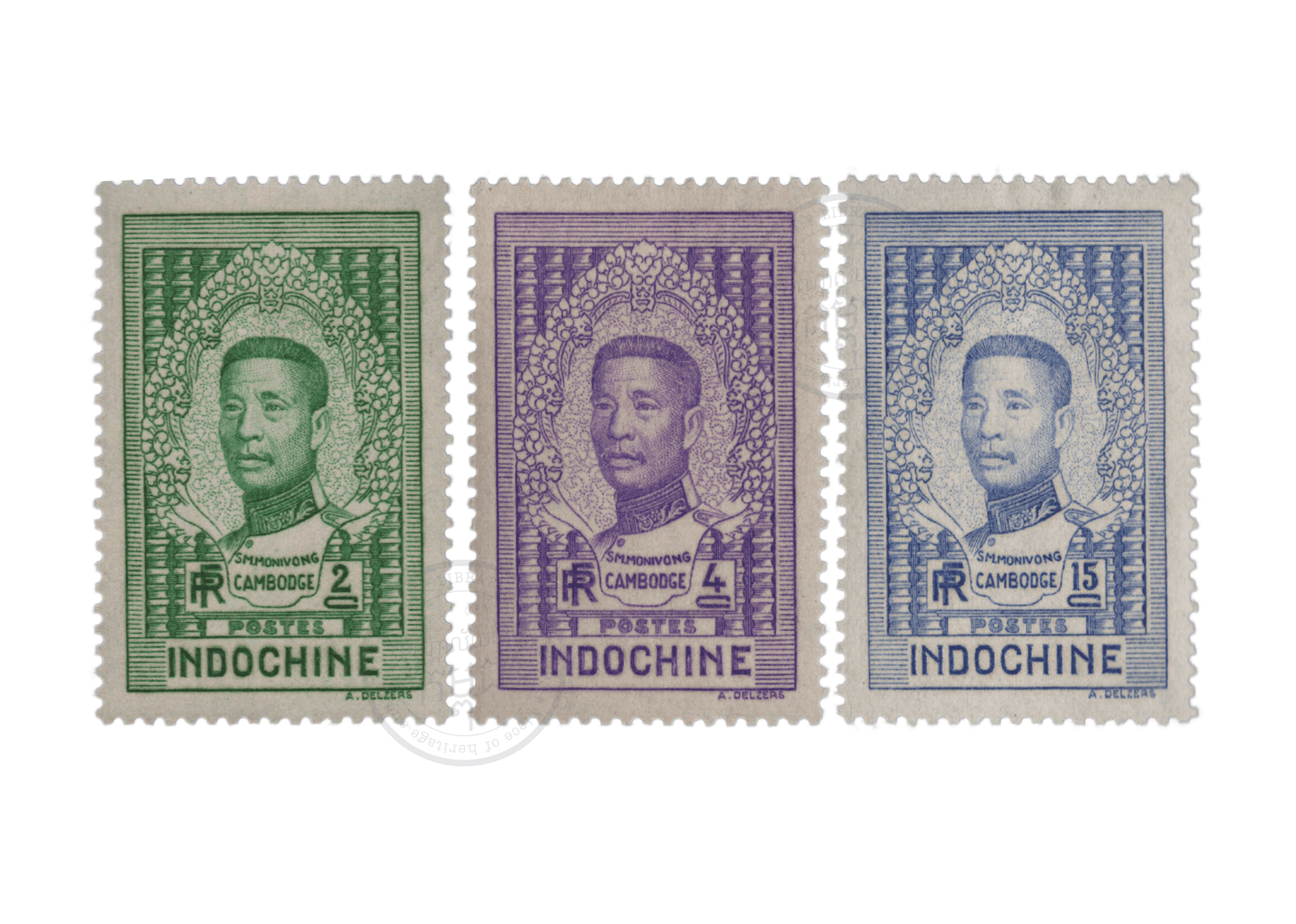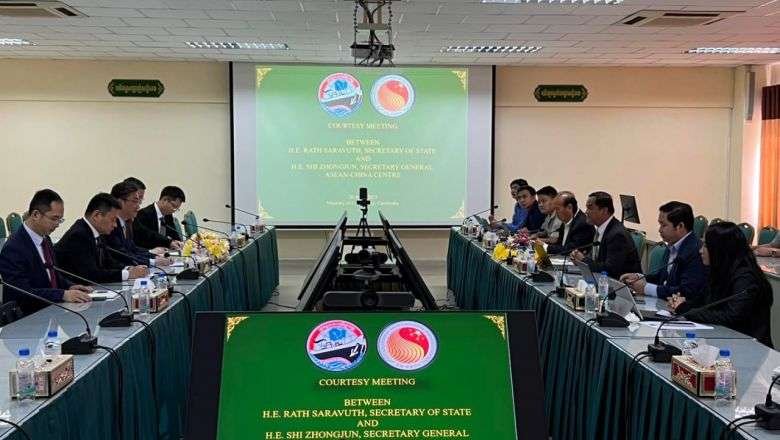A piece of history, culture, identity and heritage
by @Fat Jase & @Douglas for The Better Cambodia
Philately is the term to describe both the art and a hobby of postage stamp collecting. And the term to describe stamp collectors? We are called Philatelists and yet we could also be called historians, cultural; anthropologists, art connoisseurs or just people that like hanging out with other interesting people.
The art of stamp collecting
Postage stamps are pieces of paper with unique designs that are used to pay for postal services. They are affixed to envelopes, letters, or postcards before they are mailed.
Technically, stamp collecting is the hobby of collecting postage stamps. However, there are so many other reasons why people collect stamps; to learn about the great history of the Kingdom of Cambodia, appreciation of artistic beauty, open our eyes to the cultural richness of the kingdom we live in, a chance to meet people and even as a form of investment.
To us, the first reasons are what got us into this hobby: to satisfy our curiosity and learn about history and appreciate the artistic beauty and cultural richness celebrated in the designs of postage stamps. In particular, we believe the Cambodian element of Indochina and especially post-independence Cambodian postage stamps are especially interesting.
Cambodia and the arrival of postage stamps
Located at the heart of South-East Asia, the Kingdom of Cambodia is well-known for its long recorded history filled with rich culture and extensive heritage. This is spectacularly evidenced in the limestone sculptures and engraved bas-reliefs at the temple of Angkor Wat.
Pieces of Cambodian history are featured in postage stamps across eras; first recorded during the French protectorate era, to the first ever postage stamps issued by the Cambodian government pre-independence from the French, to the postage stamps issued after the nation’s official independence in 1953.
With great delight we get to share some interesting findings about postage stamps featuring Cambodia that opened our eyes.
The first Indochina postage stamps about Khmer context, Khmer girl & Khmer woman, 1907.
These are believed to be the first postage stamps of Indochina to feature Khmer context issued in 1907, showing two female figures, a Khmer girl and Khmer woman. Noticeably, this is interesting as for the first time it broke from the tradition of Indochina postage stamp design, which often depicted Roman or Greek mythical creatures.
A surcharge postage stamp featuring a Khmer woman standing was issued in January, 1919 with a 35 cents print in blue onto the 75 cents.
These postage stamps were designed by the French illustrator, engraver and stamp designer, Jules-Jacques Puyplat (1843 – 1915).
The first Indochina postage stamps about Khmer Monarch, King Sisovath Monivong, 1936
In 1936, French Indochina honoured the Kingdom of Cambodia by introducing the first postage stamps portraying the Khmer Monarch.
The design depicted his majesty King Sisovath Monivong, the reigning King of Cambodia at that time. This comes as a complete set of 11 postage stamp variations in multiple colours and face values in Piastre (official currency used during the Indochina era (1 Piastre equals 100 cents).
These were designed by the French postage stamp designer, Antonin Jean Delzers (1873 – 1943).
The first postage stamp issued by the government of Cambodia, King Norodom Sihanouk, 1951-1952
Although it is still under French colonial rule, the Kingdom of Cambodia has been recognized as a self-governing State and issued its first postage stamp in 1951. This was a significant step towards true and official independence of the Kingdom as it marked the beginning of Cambodia’s own postal system.
The Khmer Apsara dancer was the first ever issued stamp in red carmine colour with a 1.50 piastre face value, issued on November 3rd, 1951.
There followed in 1952 three themes of 16 postage stamps, which featured King Norodom Sihanouk, the Father of Independence and Khmer motifs (Apsara dancers and Royal Enthronement hall), shown over.
Postage stamps issued by the government of Cambodia after the country’s official and full independence, Method of Mail transport featuring the elephant, 1954-55
The country received its full and official independence on November 9th, 1953, thanks to the relentless effort of his majesty King Norodom Sihanouk who fought for the freedom and liberation of Cambodia and us as the Khmer nation.
The Kingdom continued to build its own postal system and issued postage stamps to further reinforce its culture, identity and heritage.
The first stamp series issued after independence covered four themes: the historical birthplace of Phnom Penh at Wat Phnom, Angkor Thom Eastern Gate and The Royal Coat of Arms. The last theme is a favourite, showing elephants as the earliest mail transportation method. Cambodia hosts a population of Asian elephants (Elephas maximus genus), the largest land animal in Asia. We believe the design is elegant and intricate, a gem of engraving. The elephant design is also the first of many highlighting the broad and beautiful and often unique range of flora and fauna in Cambodia.
Postage stamps issued to commemorate the Kingdom’s 10th year of independence; Independence Monument & King Norodom Sihanouk, 1961
On November 9th, 1961, the Kingdom of Cambodia celebrated its 10th anniversary of independence.
The government issued a postage stamp collection to commemorate this special occasion, where the Independence Monument and King Norodom Sihanouk, the Father of Independence were featured onto the design.
A point of note is that the 10th year anniversaries for the Kingdom’s Independence was counted from 1951, while the official independence was marked from the year 1953.
Postage stamps issued to commemorate the 4th anniversary of National Liberation from the Khmer Rouge regime depicting again the Wat Phnom historical landmark in 1983
The country underwent a few changes of eras including civil unrest and the dark years of sorrow of the Khmer Rouge Regime.
On January 7th, 1979, Cambodia escaped the Khmer Rouge genocide and got to experience freedom again.
The 7th of January remains an historical and important date throughout Khmer history. In 1983, commemorative postage stamps were issued to celebrate this moment of history, where it again features the historical landmark of Wat Phnom.
Upcoming exhibition co-hosted by PteahChas & StampLibrary:
POSTAGE STAMPS, FEATURING CAMBODIA – PART 1
Where many series of authentic stamps featuring Cambodia across different eras will be showcased.
Location: Pteah Chas rooftop gallery, House #91, Street 110, Phnom Penh, Cambodia
Exhibition period: August 6th – 30th, 10h00 – 20h00
(Free entry)
Follow us for more:








